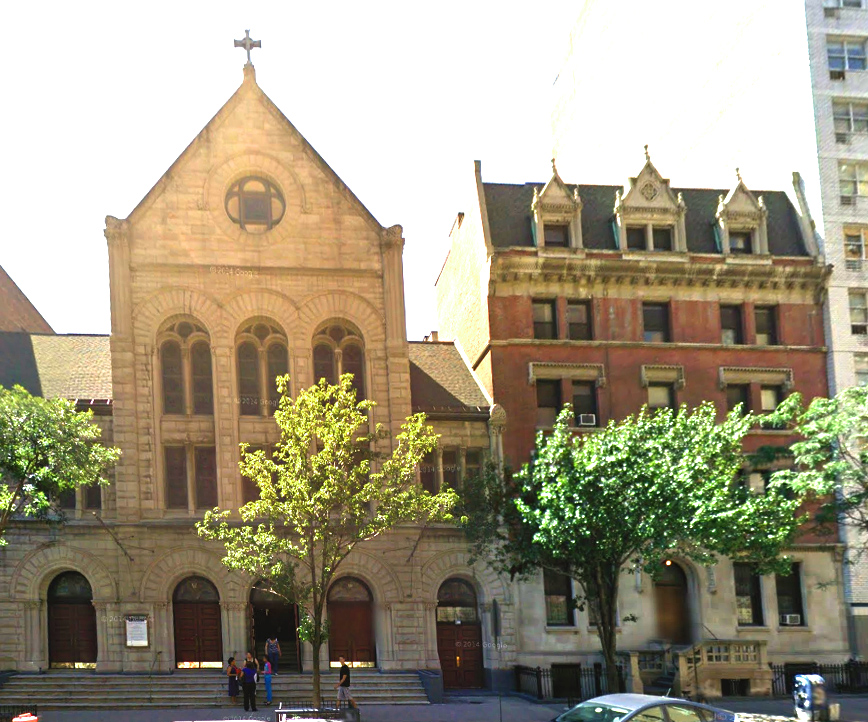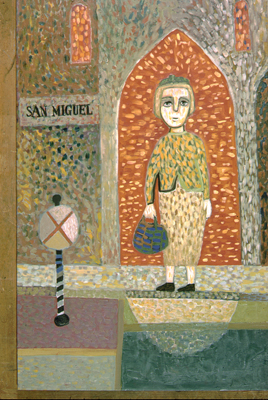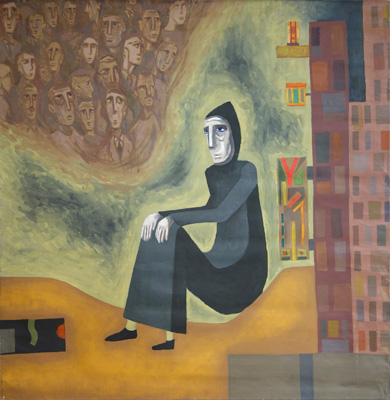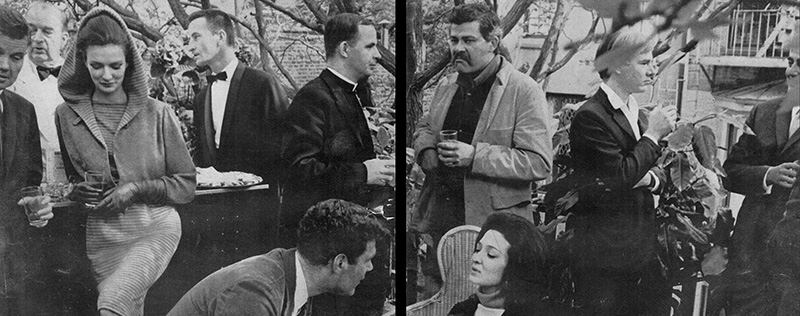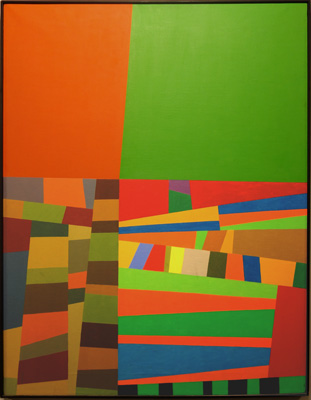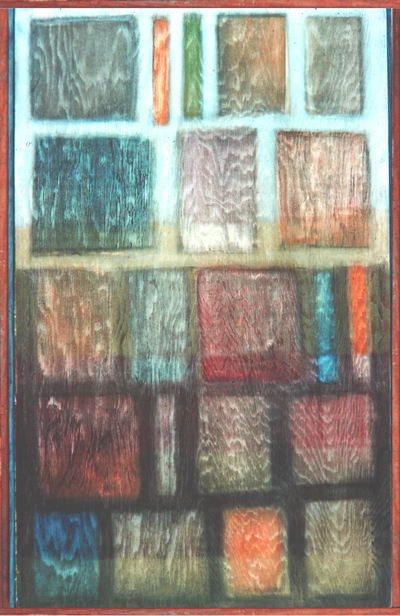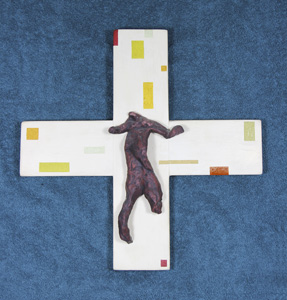|
New York, 1960-1962 The shock of this move from the
peaceful solitude of the monastery in Western Pennsylvania wore off as I
adapted to the sound and tempo of city life. The painting below
was painted shortly after I had set up my NY studio.
Living as a monk on west 34th Street, unlike the monastery, included the rush hour with crowds of people. The tall buildings and the sign with a "Y" recalls the YMCA on 34th Street as well as a question "why". This, and other paintings during my first year there, display the influence of Ben Shahn whose work appealed to me for its social consciousness. Within 4 to 6 months my approach would shift to experimentation with visual form informed by both constructivist traditions and Abstract Expressionists whom I came to know personally.. I was especially influenced by the Journal "It Is", edited by Philip Pavia, and the documents of modern art series edited by Robert Motherwell. Harpers Bazaar, August, 1962, " Young Americans & the well mixed party", pp.88-89.
Feature
profiles myself, left of
centerfold facing right and conversing with John Chamberlain (with
mustache) whose junk sculptures demonstrated the power of an
informed use of refuse. Andy Warhol, farther right, back to
back with Chamberlain, was emerging then as a major innovator of
what would become known as "pop art". Warhol attended
Carnegie Mellon in Pittsburgh during the period when I was at the
Art Institute of Pittsburgh.
|
||
| With the help
of advisors and friends I established contact with older New
York abstract expressionists as well as younger artists
involved with emerging op, pop, neo-dada, and minimalist
trends. Helen Farr Sloan, wife of the late John Sloan, met
regularly with me and became my mentor on the earlier generation
of New York painters. Stephen Joy, the Martha Jackson Gallery curator,
who mounted the 1959 "found object" show, knew many of the
emerging artists in New York, and became a lifelong friend..
Studio visits and meetings with artists as diverse as Barney Newman,
Fritz Eichenberg, Ad Reinhard, and George Brecht led me to
become familiar with the struggles these artists experienced
as they wrestled with their art. I learned that
many searched for spiritual fulfillment through their art in a manner
similar to that of the monks in their spiritual quest. From these
experiences I came to feel a kinship with cutting edge arts movements
and found myself challenging many of my own assumptions about my
life and my pursuit as an artist.. |
 |
|||
|
Sunrise on West 34th St,
1962,
c. 30" by 42" oil on canvas |
Untitled
#4,
1961,
c.16" by 36" gesso and acrylic on wood |
||
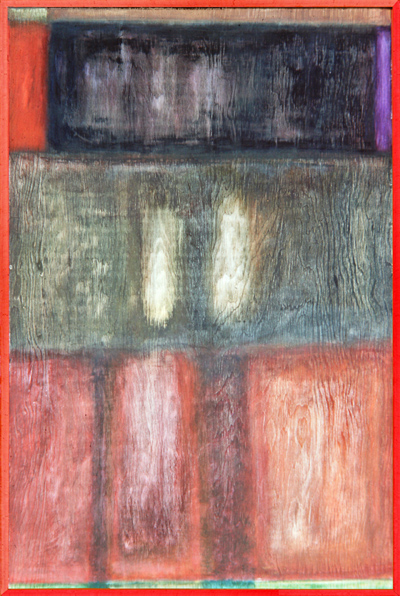 |
|||
|
Untitled #1, 1961,
24" by 36" gesso and acrylic on wood. |
|||
|
Above: In New York I began working with wood panels with a gesso base. Using thin washes of acrylic rubbed over the surface I was able to achieve the effects of floating forms that would become an integral part of my New City series. These forms emerged from the influence of Mark Rothko. At the same time I experimented with hundreds of drawings using spontaneous pen and brush strokes. Eventually automatic drawing would be integrated in my New City paintiongs. Below:
My New York period also included other work that related more
directly to my monastic interests.
Within another year my work began to consciously incorporate visual ideas that from both constructivist and expressionist art of the early 20th Century. This crucifix embodied the ideas that would inform my art in the 1960's. It represents my spiritual journey at St. Vincent, a journey that deeply informed the course of my life. Currently it is located in my Minneapolis home. |
|||
|
Although
the New York experience led me to new perspectives on art &
spirituality, I did not entirely abandon my earlier work. When I had the opportunity to work with Fritz Eichenburg and
Andy Stasik at Pratt Institute's new Graphic Art Center in
Manhattan, I undertook a series of etchings on the Stations of the
Cross. There I learned of the post WWII revival of printmaking
and the work of Hayter in Paris who had influenced the revival in
New York. |
|||
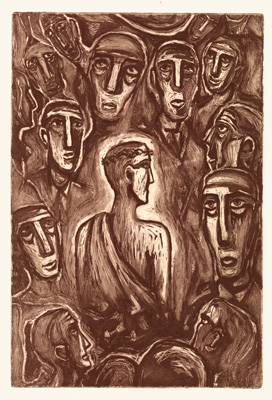 First: Jesus is Condemned |
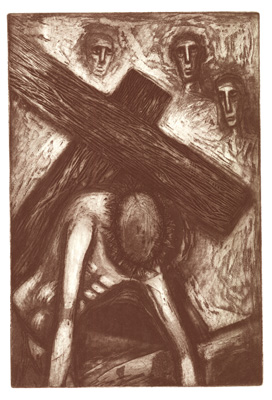 Third: Jesus Falls the First Time |
||
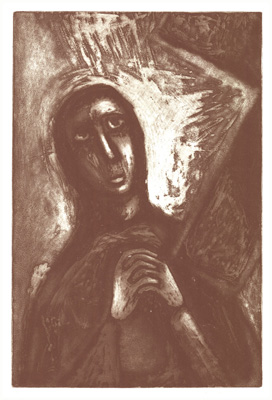 Fourth: Jesus meets his mother. |
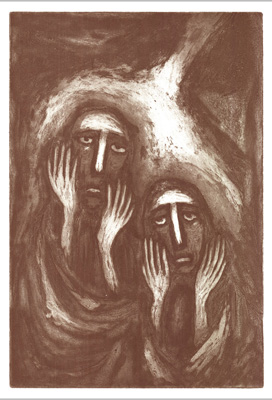 Eighth: Jesus meets women of Jerusalem |
||
|
Above: Etchings for the "Stations of the Cross", 1960/61, 17.5" by 22.5", plates are 12" by 17.5" The images show the influence of George Roualt whose work was well known to me. The series was never completed. These images were scanned from proofs & prints that I had kept. I intended to complete the series and pull an edition when I returned to the monastery. |
|||
< Back: Monastic period menu | Main menu | Search | Contact | Copyright
